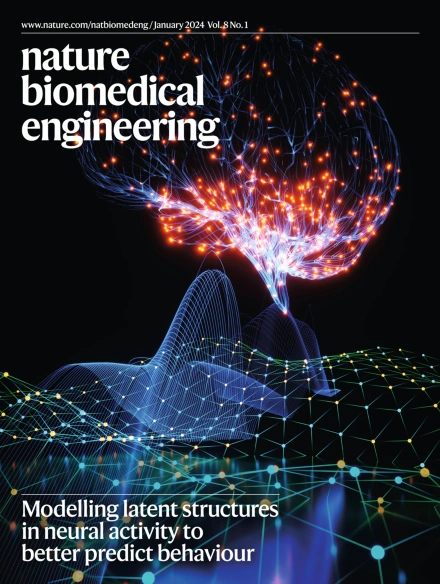通过植入物介导的小分子缓释靶向免疫抑制骨髓细胞以防止胶质母细胞瘤复发。
IF 26.8
1区 医学
Q1 ENGINEERING, BIOMEDICAL
引用次数: 0
摘要
胶质母细胞瘤是一种高度侵袭性的脑肿瘤,手术后复发的风险很高,即使在联合化疗和放疗时也是如此。持久治疗的主要障碍是肿瘤的免疫抑制环境,这种环境主要由骨髓细胞主导。在这里,我们描述了一种可生物降解的植入物的发展,这种植入物可以在肿瘤切除后持续释放免疫调节剂小分子,将肿瘤浸润的髓样细胞重编程为促炎、抗肿瘤表型。在免疫能力小鼠模型中,该疗法诱导髓细胞中白细胞介素-12的表达,而不升高全身细胞因子,并增加CD8+和CD4+ T细胞的浸润。超过50%的治疗小鼠(联合放疗和化疗)在实验期间(80天)保持无肿瘤。我们进一步在体外治疗人胶质母细胞瘤外植体,并观察到肿瘤浸润性骨髓细胞中白细胞介素-12的表达增加,支持该策略的转化潜力。这种植入式系统提供了一种很有前途的方法,通过激活先天免疫和维持术后免疫监测来预防胶质母细胞瘤复发。本文章由计算机程序翻译,如有差异,请以英文原文为准。
Targeting immunosuppressive myeloid cells via implant-mediated slow release of small molecules to prevent glioblastoma recurrence.
Glioblastoma is a highly aggressive brain tumour with a high risk of recurrence after surgery, even when combined with chemotherapy and radiotherapy. A major barrier to lasting treatment is the tumour's immunosuppressive environment, which is largely dominated by myeloid cells. Here we describe the development of a biodegradable implant to sustainably release immune-modulator small molecules to reprogram tumour-infiltrating myeloid cells toward a pro-inflammatory, antitumour phenotype in the surgical cavity after tumour removal. In immunocompetent mouse models, this therapy induces interleukin-12 expression in myeloid cells without systemic cytokine elevation, and increases the infiltration of CD8+ and CD4+ T cells. Over 50% of mice treated (in combination with radiotherapy and chemotherapy) remain tumour-free during the experimental course (80 days). We further treated human glioblastoma explants ex vivo with the therapy and observed increased interleukin-12 expression in tumour-infiltrating myeloid cells, supporting the translational potential of this strategy. This implantable system offers a promising approach to prevent glioblastoma recurrence by activating innate immunity and sustaining immune surveillance post-surgery.
求助全文
通过发布文献求助,成功后即可免费获取论文全文。
去求助
来源期刊

Nature Biomedical Engineering
Medicine-Medicine (miscellaneous)
CiteScore
45.30
自引率
1.10%
发文量
138
期刊介绍:
Nature Biomedical Engineering is an online-only monthly journal that was launched in January 2017. It aims to publish original research, reviews, and commentary focusing on applied biomedicine and health technology. The journal targets a diverse audience, including life scientists who are involved in developing experimental or computational systems and methods to enhance our understanding of human physiology. It also covers biomedical researchers and engineers who are engaged in designing or optimizing therapies, assays, devices, or procedures for diagnosing or treating diseases. Additionally, clinicians, who make use of research outputs to evaluate patient health or administer therapy in various clinical settings and healthcare contexts, are also part of the target audience.
 求助内容:
求助内容: 应助结果提醒方式:
应助结果提醒方式:


